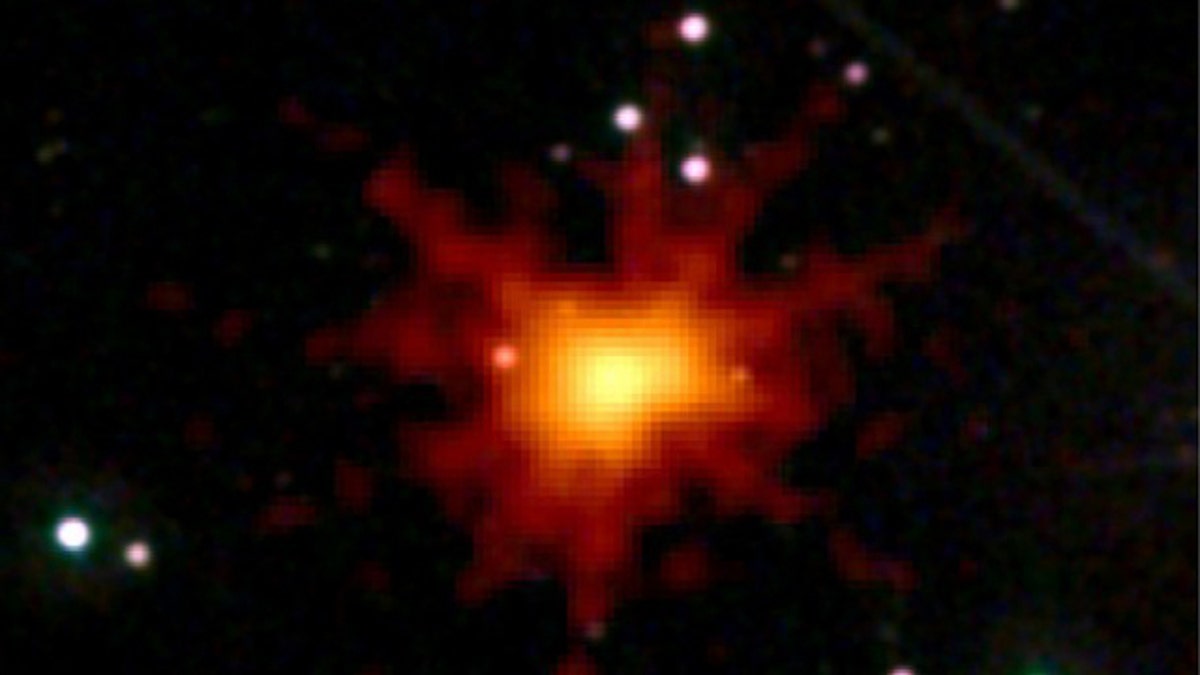
The brightest gamma-ray burst ever seen in X-rays that temporarily blinded Swift's X-ray Telescope is seen in this handout taken by NASA's Swift space observatory on June 21, 2010 and released on July 14, 2010. The gamma-ray burst and explosion of x-rays that followed came from a star that died 5 billion years ago, far beyond our own Milky Way galaxy, NASA and British scientists said. It took this long for the radiation to reach the Swift orbiting observatory. (REUTERS/Stefan Immler/NASA/Swift/Handout)
The brightest explosion of a star ever seen temporarily blinded a satellite set up to watch such events, astronomers said on Wednesday.
The gamma-ray burst and explosion of X-rays that followed came from a star that died 5 billion years ago, far beyond our own Milky Way galaxy, NASA and British scientists said. It took this long for the radiation to reach the Swift orbiting observatory.
The bright X-ray burst blinded Swift on June 21, and the observatory's software ignored it as if it were an anomaly, the astronomers said.
"The intensity of these X-rays was unexpected and unprecedented," Neil Gehrels, Swift's principal investigator at NASA's Goddard Space Flight Center in Maryland, said in a statement.
Gehrels said the burst, named GRB 100621A, is the brightest X-ray source that Swift has detected since it started looking for them in 2005.
"Just when we were beginning to think that we had seen everything that gamma-ray bursts could throw at us, this burst came along to challenge our assumptions about how powerful their X-ray emissions can be," Gehrels said.
"The burst was so bright when it first erupted that our data-analysis software shut down," said Phil Evans of Britain's University of Leicester, who discovered the burst when he was going through some recorded data from Swift.
"So many photons were bombarding the detector each second that it just couldn't count them quickly enough. It was like trying to use a rain gauge and a bucket to measure the flow rate of a tsunami."
When a star explodes, radiation travels at the speed of light in all directions. Gamma rays reach Earth first, followed by X-rays.
This particular one was 140 times brighter than the brightest continuous X-ray source in the sky -- a nearby neutron star.
